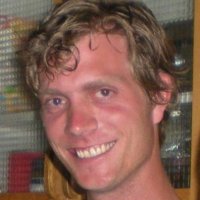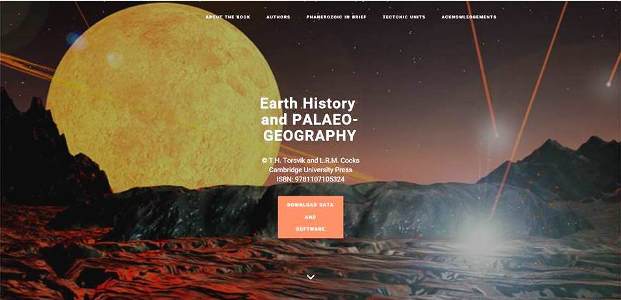Previous events - Page 217
Ulrik Bo Rufus Enstad (Oslo) will give a talk with title: Connections between Gabor frames and Noncommutative Tori
Abstract: A Gabor frame is a special type of frame in the Hilbert space of square-integrable functions on the real line. Gabor frames provide robust, basis-like representations of functions, and have applications in a wide range of areas. They have a duality theory which is deeply linked to Rieffel’s work on imprimitivity bimodules over noncommutative tori. We explore several links between Gabor frames and noncommutative tori, and show how operator algebras can be used to give alternative proofs of theorems from time-frequency analysis. This talk is based on my Master’s thesis written at NTNU, which reviews Franz Luef’s work on the connections between Gabor frames and modules over noncommutative tori, as well as some joint work with Franz Luef.
Climate change effects on substrate affinity and trait-dependent responses in wood-decomposing fungi
Glucose and Vascular Inflammation
Benedikt Lerch at the Department of Geosciences will be defending his dissertation: Petroleum Systems of the Barents Sea – A geochemical study for improved petroleum system understanding
Doctoral candidate Benedikt Lerch at the Department of Geosciences will give a trial lecture on the given topic: Geohistory and Petroleum Systems of the Norwegian Sea
Javad Naseryan-Moghadam at the Department of Geosciences will be defending his dissertation: Investigation of petrophysical and rock physical aspects of CO2 storage in Sandstone reservoirs - An experimental study
Nacira Agram (University of Oslo) gives a lecture with the title: Model Uncertainty Stochastic Mean-Field Control.
Doctoral candidate Javad Naseryan-Moghadam at the Department of Geosciences will give a trial lecture on the given topic: Large-scale CO2 storage - Scientific Challenges
MicroRNAs in Metastasis
Reza Lahidji, Executive Advisor, Director of Quantitative Research, International Law and Policy Institute
Friday the 9th of December we will discuss a recent paper by Halley (2016): Prenatal Brain-Body Allometry in Mammals
Join us!
This thursday, at the Speciation Journal Club, we will discuss a paper entitled "Divergence and Functional Degradation of a Sex Chromosome-like Supergene" by Tutte et al. in Current Biology (2016)
A continuation of part I.
From Pluripotency to Definitive Endoderm: Delineating the Signalling Events of Endoderm Specification in Human Pluripotent Stem Cells
John Quigg, Arizona State University (Tempe), USA, will give a talk with title "The Pedersen rigidity problem".
University of Abstract: If \alpha is an action of a locally compact abelian group G on a C*-algebra A, Takesaki-Takai duality recovers (A,\alpha) up to Morita equivalence from the dual action of \widehat{G} on the crossed product A\rtimes_\alpha G. Given a bit more information, Landstad duality recovers (A,\alpha) up to isomorphism. In between these, by modifying a theorem of Pedersen, (A,\alpha) is recovered up to outer conjugacy from the dual action and the position of A in M(A\rtimes_\alpha G). Our search (still unsuccessful, somehow irritating) for examples showing the necessity of this latter condition has led us to formulate the "Pedersen rigidity problem". We present numerous situations where the condition is redundant, including G discrete or A stable or commutative. The most interesting of these "no-go theorems" is for locally unitary actions on continuous-trace algebras. This is joint work with Steve Kaliszewski and Tron Omland.
Late Lunch Talk by Claudio Ottoni, CEES
Riccardo De Bin (Department of Mathematics, University of Oslo) will give a seminar in the lunch area, 8th floor Niels Henrik Abels hus at 14:15.
Framed correspondences were invented and studied by Voevodsky in the early 2000-s, aiming at the construction of a new model for motivic stable homotopy theory. Joint with Ivan Panin we introduce and study framed motives of algebraic varieties basing on Voevodsky's framed correspondences. Framed motives allow to construct an explicit model for the suspension P1-spectrum of an algebraic variety. Framed correspondences also give a kind of motivic infinite loop space machine. They also lead to several important explicit computations such as rational motivic homotopy theory or recovering the celebrated Morel theorem that computes certain motivic homotopy groups of the motivic sphere spectrum in terms of Milnor-Witt K-theory. In these lectures we shall discuss basic facts on framed correspondences and related constructions.
Stereolithography - A Powerful Tool to Create almost Everything
Stereolithography or "SLA" printing is a powerful and widely used 3D printing technology for creating prototypes, models, and fully functional parts for production. This additive manufacturing process works by focusing an ultraviolet (UV) laser onto a vat of liquid resin. Layer by layer formation of a polymeric network allows printing parts that are almost impossible to create with other processes.At Formlabs, a startup that originated out of the MIT Media lab in 2011, we work on all aspects of SLA printing; we develop and manufacture 3D printers, resins, and software. In this talk, I will give a detailed overview of the printer technology, the chemistry of the materials, and how to use SLA for lots of exciting applications.
This Friday the journal club will discuss a paper by Simon et al. (2016): "High evolutionary constraints limited adaptive responses to past climate changes in toad skulls".
Join us!
© T.H. Torsvik and L.R.M. Cocks Cambridge University Press ISBN: 9781107105324
Effective population size is an important concept in evolutionary biology, providing information about genetic variability, inbreeding and the efficiency of directional selection. Despite its obvious relevance, it has rarely been discussed in the context of fishery-induced selection.
This thursday, at the Speciation Journal Club, we will discuss a paper entitled "Neighboring genes for DNA-binding proteins rescue male sterility in Drosophila hybrids" by Lienard et al. in PNAS (2016)





